The Good in a Little Fiction: Conrad, Consumer Readers, and Commodity Culture
Simon R. Frost, Bournemouth University
© Simon R. Frost. No part of this text may be reposted or republished without the permission of the author.
“The innocence of children is routinely destroyed in American classrooms with books like this … [They] seem to promote the idea that evil is somehow European.”
“I read Heart of Darkness when I was 19 and at that time it was one of my favourite novels.”
“Joseph Conrad showed in this book that he never understood much about human nature.”
“People take way too much meaning out of certain books. To me, books should be like music.”
“Heart of Darkness is no light reading, yet is interesting in that it is a quasi-mystery.”
“I was felt [sic] as if I was literally transported to another time and place; I could hear the crickets crick and feel the bugs and the heat and the terror. A must read.”
“I hardly recognized in it the beautiful country of Congo that I know.”
“Many readers miss the actual meaning of Heart of Darkness. The novella is about what if a European secret society pre-selected a charismatic totalitarian fascist leader.”
“I purchased this book for my 17 year old daughter. She needed it for an assignment at school. The book was exactly what she needed. It shipped fast and is in great condition!”
— Customer reviews from the Amazon.com retail website, April 2007
Books are not texts. This simple proposition has social implications. While institutionalised methods of critical interpretation are excellent at generating meanings from unified texts, they are inadequate for dealing with either the transmission of books or their social significance. What do books mean for their audiences, for the people whom the language of economics calls ‘end-users’?1 And, although sometimes awkwardly and indirectly expressed, readers’ comments, like those quoted above, deserve to be taken seriously, at least by any sociology of literary works. Some recent reactions by readers to Heart of Darkness can be found in the three hundred and seventy or so online customer reviews available on the Amazon retail website. The depth of these reactions may not equal that of the novella’s critical reception, but they are more than a match in their breadth.
The history of Conrad’s text has been comprehensively documented. Autobiographical features, political and colonial histories contextualising the text are known, along with the history of its critical reception. Literary biographers, for example, are interested in Conrad’s own travels up the Congo River, in the Roi des Belges, in 1890, or in contenders for the template to Kurtz. Contextual details of New Imperialism can readily be found, too. Atrocities committed in the Belgian Congo Free State were registered in critiques of the time, as in Roger Casement’s “Congo Report” or in the papers of the Congo Reform Association. Much of this, however, was criticism made by one section of the colonial apparatus against another, often coupled to the belief in the reforming benefits of British colonialism as compared to the exploitation of others. This has fuelled the indignation of critics such as Chinua Achebe since at least 1975. Then there is Rezeptionsästhetik and the history of professionalized critical receptions, its catalogue incorporating not only biographic and historical-context approaches but also formalist readings based on internal formal structures of the text. The formalism on which early New Critical close readings depend on is also evident throughout J. Hillis Miller’s late-structuralist reading, in which the truly dark heart resides in the literary sign, as Miller paraphrases Derrida, in literary fiction’s “endlessly deferred promise of a revelation that never occurs” (Miller 16).
All these readings, important as they are, and incisively brilliant as they can be, are readings of a text: a text whose materiality is occasionally sensed by literary theorists when witnessing the massive editorial labours of textual scholarship which have gone into deciding which of the six or so textual variants should be the copy text.2
But what of the books? What of the river of imprints bearing the novella’s title, the half-dozen products entitled Heart of Darkness that Conrad put his name to during his lifetime, and the many more posthumously attributed to him? A Penguin Popular Classics edition published in 1994, and insouciant as to its geography, presents as its cover illustration a detail from Hunter in a Brazilian Jungle (1864), by M.J. Heade. The timing and cheapness of the edition, initially priced at two pounds, may be related to its 1994 publication date, seventy years after Conrad’s death, and so presumably the year the novella left copyright. Alternatively, an imprint for a new Canadian print-on-demand press, Chevalier editions, at eight Canadian dollars, seems produced almost exclusively to raise the value of the firm’s brand (the publisher’s publicity material repeatedly assures us they focus on “reader enlightenment”) (Conrad, Chevalier Edition). At the same time, a stand-alone cover for Heart of Darkness has been produced by Billy Childish for BOOKART, as part of a protest against Virgin Publishing. In opposition to visual policy at Virgin, the artist claims the new cover promotes more faithfully a radicalism he reputes to Conrad’s novella. When featured in the BBC interactive culture magazine, Collective, the same cover then usefully doubles as a proclamation of the BBC’s own commitment to self-styled radical Art (Childish, Collective). What these examples suggest is a reciprocal coordination, involving not merely publishing as a vehicle for Conrad’s work, but also Conrad’s work as both a resource for business strategies, and a potential satisfaction of private needs.
The core of this essay will be diachronic, focusing on the first edition of Heart of Darkness entitled The Heart of Darkness serialised for Blackwood’s Edinburgh Magazine, in three parts from February to April 1899—not because of any supposed significance of origin, but because this publication context contrasts so dramatically with much of the novella’s critical heritage, thereby highlighting a difficult but rewarding border between comparative literature and a sociological history of literary books.
The Heart of Darkness was a work solicited by William Blackwood and Sons for inclusion in a double-length anniversary issue celebrating the 1000th number of the firm’s flagship, Blackwood’s Edinburgh Magazine. Given that one of the narrative’s themes was a rupture in the myth of the white man’s burden, we should ask why it was commissioned for this Empire-wide periodical, Tory in outlook, and how its readers might have responded.
The history of Blackwood’s has been dealt with in detail by David Finkelstein, but a brief outline is worth repeating. After the death of John Blackwood (George Eliot’s publisher) in 1879, the family firm came under the sole administration of William Blackwood III, at a time that coincides with the emergent period of New Imperialism. Under the new leadership, Blackwood’s Magazine, known as Maga, became “strongly identified as an essential part of the British colonial social life…” (Finkelstein, “Rise and Fall”). Blackwood’s ties to the British Empire were strong. Both William III’s father and uncle had served in India, while two of his brothers died there: brother George was a prominent figure at Maiwand, the site of a British military catastrophe in Afghanistan in 1880. Typically, Blackwood’s authors were military personnel, colonial civil servants, and Tory politicians, including “Sir Henry Brackenbury, Sir Edward Braddon (premier of Tasmania and brother of M.E. Braddon, a 19th century sensation novelist), G.W. Steevens (journalist), Joseph Conrad, Henry Newbolt (empire poet [he who confused warfare with games of cricket]) and James Grant (explorer of the Nile with John Hanning Speke)” (“Rise and Fall”). Finkelstein cites a letter to William Blackwood from J.E.C. Bodley about Bodley’s article on the Portuguese in East Africa, in 1888: “The early portion of the article…is not only of importance to the British public, but will be read with the greatest interest throughout South Africa. The time-honoured cover of Maga was a very welcome sight to me not only on the tables of the Clubs at Capetown, Kimberley, Pretoria, but frequently also in remote stations and solitary Magistrates’ residences […]” (qtd. in “Rise and Fall”). Lamenting the decline of the Empire on the occasion of the independence of Malta, an article in the Daily Mail on 22 September 1964 asserted: “In tea plantations and hill stations, from the West Indies to India, across Africa and Burma, mildew and jungle has overtaken the bound volumes of Punch and Blackwood’s Magazine, the cricket pitches and the billiard tables”(qtd. in “Rise and Fall”, n. 15). Indeed, the colonial connection to the magazine was such that an advertising strap to the cover of Maga from the early 1900s declared it to be ‘The Empire in Little’ (Finkelstein 1995, xvi).
Finkelstein has also worked on the interpretative context provided by the three relevant numbers of Maga, and additional material is available on The Victorian Web in work by Phillip V. Allingham. Both conclude that readers would not have registered much difference between Conrad’s serialised The Heart of Darkness and the standard Blackwoodian imperial adventure anecdotes carried by the magazine. Looking at the contents pages, it is easy to see why. As Allingham notes, in the January 1899 number (the one prior to Conrad’s piece) can be found “Romance of the Fur Trade: The Mountain Men”, an ambiguous critique of the fur business in the American West, perpetrated by scalp-taking mountain men, who, the author declares, “rather preferred ‘raising hair’ to trapping beaver, though the one meant profit and the other was mere pleasure” (qtd. in Allingham, The Victorian Web). Allingham remarks that Conrad’s work seems suddenly more at home if the term “skull” is substituted for “scalp”, “native” for “Indian” and “procuring ivory” for “trapping beaver” (“profit” was common to both tales). Another companion article is “The Preservation of African Elephants” condemning “indiscriminate” Black-African hunters urged on by high ivory values. The February issue features, along with Darkness, “Jamaica: an Impression” and “Romance of the Mines: California Gold Discoveries”. Allingham concludes that the accompanying texts “form an historical and cultural context for a late-nineteenth century reading of Conrad’s novella” (The Victorian Web). It is worth going beyond this ground work to take a detailed look at this context.
The firm Blackwood and Sons had always done a lively trade in travel and adventure stories. In 1899 alone, the year of Conrad’s novella, Blackwood’s published in volume form E. Roper’s A Claim on Klondike: a Romance of the Artic El Dorado, and G.W. Steevens’s, In India (a follow-up to his highly successful With Kitchener to Khartum [sic], published in 1898). In the following year Blackwood’s issued From Cape Town to Ladysmith, also by Steevens,3 along with Captain Haldane’s How We Escaped from Pretoria, which enjoyed a new illustrated edition in 1901. The two titles combine military and Empire themes with travel and adventure. Short stories from Maga had previously been collected in volumes as Tales from Blackwood’s, but there were also genre-specific anthologies. The British Library has a set of Blackwood’s Travel, Adventure and Sport series, published in six volumes from 1889 to 1891.4
When considering the horror aspect to Victorian gothic that elsewhere has been referred to as the power of sensation or been indicated by the term Unheimlich, many titles published by Blackwood’s provide Darkness with a new family grouping. In theory, the extent of the family is limited only by interpretative skill, but the 1899 February number of Maga affords a telling example. Along with Conrad’s first instalment, following Lt-Gen. Brackenbury’s “Letter from Salamanca”, there is a nightmarish tale by Bernard Capes, presented mostly in interior monologue with surrealist tinges,entitled “The Sword of Colonel Lacoste”. It opens as Lacoste wakes, dazed, kept alive by the dead body of the subaltern on top of him. The surrounding country is unknown, dark, filled with the shadows of wolves who eventually kill him. A priest takes Lacoste’s sword but the sword is of no use, being sealed into its scabbard by blood. The wolves surround him: “white spectres of the living death. And so…the natural dusk, weaving weft into warp of darkness, had crept upon them…then his eyes, straining in the inhuman blackness, would seek frantically to resolve the character of that that pattered at his side…Then he knew that what he dreaded had befallen, and the utter ecstasy of horror entered into and possessed his soul” (400).
While the similarities in prose style to Darkness are evident, literary critics will still insist on the difference. These critics, however, were not Blackwood’s market segment, and Blackwood’s, for all its assertions of literary excellence, was still a commercial operation catering for a specific market. In “The Sins of Education”, an article immediately following Conrad’s second instalment (March 1899), the author railed against the insidious editor of the magazine “manufactured by the ton”: “He has no interest in literature or politics …but he knows precisely what the public wants and he is prepared to give it to them” (507). William Blackwood, too, knew what his public wanted. So along with Bernard Capes, he commissioned Joseph Conrad.5
The question to be asked with regard to Heart of Darkness is what qualities may have been demanded by its early audience? Apart from literary merit, did Blackwood have grounds for believing his readers would enjoy the work? What satisfactions, what goods could the audience obtain? Are such psychologically-oriented questions pertinent to book history at all? My contention here is that such questions are crucial and, furthermore, that answers can be suggested even though extensive historical consumer research still needs to be undertaken. An answer can be proposed, though it will be speculative. In economics, a ‘good’ refers to anything that is perceived to satisfy a need or desire. Good is neutral. There are no ethics in economic good. Economists use the term ‘utility’, sometimes ‘ophelimity’, when attempting to indicate a good that is evaluated in the subjective perception of the user.6 Moreover, although a good is supplied by a material object, this does not mean that a good itself has to be tangible. A situation can be imagined whereby, beyond opportunities for literary aesthetics, end-users of books were trying to purchase, say, sources of excitement, or of wonder, or horror. They may have hoped for status or identity, perhaps a challenge or encouragement, they may even have tried to purchase confirmation of personal beliefs. The satisfactions that buyers perceive are all goods, but only when they are given material form (in this case, print) and featured in an exchange economy (in this case, published) do they satisfy the criteria for being “Goods” in a commodity sense. This is the passage of an intangible good into Goods; when potential satisfactions are provided with material form and featured in exchange, they acquire the status of commodified Goods.7 The literary publication therefore, in its end use, can be the site of both aesthetic experience and at the same time the consumer’s experience of a commodity.
This claim can be tested by compiling a list of what Heart of Darkness, the text, proposes to supply as “good”. An electronic search was made of an e-text of Heart of Darkness from Project Gutenberg. For textual scholars, the Gutenberg text is extremely unreliable, carrying no references for source, and so on. It is only a rough guide. Given that ‘users’ of Conrad may have come to the work through any number of editions or even abridgements, however, and that the search is a speculative experiment for the purposes of illustration, the method can be considered acceptable for our purposes. In the search a total of 51 hits for the term ‘good’ were registered. Instances where ‘good’ is a direct modifier were noted (good friends, good fellowship, etc.). Idiomatic usage (good heavens, good evening, good bye) as well as single occurrences that do not modify (it was no good bothering) were discounted. A pattern emerges.8
Lexical GOOD as a direct modifier in Heart of Darkness
|
2 Hits |
|
|
2 |
|
|
1 |
(not salary—“what good is their extravagant salary to them?) 1 hit |
|
1 |
|
|
1 |
|
|
1 |
|
|
1 |
|
|
1 |
|
|
1 |
|
|
1 |
|
|
1 |
|
|
1 |
|
|
1 |
|
Ideas of companionship and nourishment achieve the highest scores (2 hits). The remaining scores provide a short list that might be organised into two groups, the first around an idea of definitiveness (good hold, good worker, pulse, shake, screech) and the second around an idea of nurturing (good care, address, influence, service, luck). Tobacco might conceivably rank with nurturing, given Victorian attitudes to smoking. The term ‘good’ appears once for “good lot of cartridges” but is deemed to modify the quantifier ‘lot’ rather than rifle cartridges (Gutenberg E-Text). Following this first tentative list, a second was then compiled involving good by association and metaphor. The narrator positively values features such as distinct coastlines as opposed to a “formless coast, rotting banks, waters dissolving into mud”. Later, the narrator says “these chaps…had bone, muscle, a wild vitality, an intense energy of movement…as true as the surf along their coast.” To distinctive boundaries and coastal surf, therefore, should be added muscular bodies and vitality. Furthermore, a map of the world is described, also with clear boundaries: “a vast amount of Red—good to see at any time, because one knows that real work is being done there.” A positive string of associated attributes and experiences slowly appears: vitality, honest real work, clear boundaries, decisiveness, nature, duty, brotherhood, navigation. For the sake of experiment, the exercise is worth a moment’s consideration.
GOODS by association and metaphor: Heart of Darkness
GOOD As opposed to:
Coastlines, distinct boundaries |
formless coast |
Decisive direction (helmsmanship, navigation). Decisiveness |
(wanderings and aimlessness) |
Hard work, vitality |
(living death) |
Good health (robust constitution) |
(defence against disease) |
Reliable, practical knowledge (Towsen’s book on seamanship is “unmistakably real”) |
|
Effective equipment: boats, rifles (Martini Henry) |
(the Winchesters used by the pilgrims) |
Stores, reliable provisions (“Good old Dutchman, supplier of stores”): rivets, linen, pens, starched collars |
(shabby manufactured goods, trinkets) |
Keeping up appearances, hair-care, grooming, dress, cleanliness. |
(moribund shapes, shadows) |
Nourishment (hunger = paramount fact) |
|
Nature (when synonymous with a priori truth), facts |
|
Brothers (other seamen, “the surf was a positive pleasure […] like the speech of a brother”) |
|
Pens (for writing inventories, keeping order, journals/diaries and reports for practical account: ie. Marlow’s narrative) |
(Kurtz’s poetry) |
The “goods” of which the narrator approves have clear lines and boundaries: they may be blunt facts, food, equipment, the need among brothers for effectiveness and decisiveness, and the ability to pass on reliable knowledge. Or, to summarise, one intangible good that Heart of Darkness can supply is the following inverted piece of worldly encouragement, projected in a message that suggests: ‘Nothing, dear reader, is going to save us from darkness. The world of men wants to turn sour—a fact we cannot answer and unfortunately also one we are mesmerised by. But take heart. The question does not need an answer. Because by hard work, by steady navigation, by focusing on material outcomes, and not being distracted by the promise of riches or getting lost in directionless reflection, we—especially we on the fortunate side of the Thames mouth—may just be able to maintain a comfortable standard of moral, material life.’ Furthermore, when considering which group of early readers might be most susceptible to this message, one that would comprise the novella’s primary market segment, a plausible suggestion might be a group composed of men, not youths, with strong ties to peers rather than broad social class affiliations, having family love-relationships compartmentalised into a background, and having professional responsibilities in an upwardly-mobile capitalised environment but no power of control over it. As already acknowledged, the commodity reading presented herein is speculative. Free indirect discourse allows the narrator’s appraisals to be interpreted alternatively, so the current commodity reading can be no more than idiosyncratic. Furthermore, the reading is not of a unified text but of textual fragments, which gain their value via social rather than exclusively textual relations. This reading thus resembles shopping far more than literary hermeneutics. What is needed, therefore, for the commodity reading to articulate what might have been the goods the audiences ‘shopped’ for, is a hasty return to book history. Ideally, access to original readers’ letters would be needed (as might one day be found in the Reading Experience Database),9 while we would also need to examine the early marketing strategies for Heart of Darkness. A brief look can be taken, however, into what the contemporary book and magazine trade was up to in its attempts to provide the satisfactions proffered by Heart of Darkness in alternative print products. From a small collection of what might be considered Darkness-related products, a few examples can be provided.
The goods noted in Heart of Darkness included the good of cleanliness and a well-kept appearance, very positively evaluated by Marlow in his encounter with a chief accountant at the Station. The accountant is praised for his white starched collars, his snowy trousers and brushed oiled hair. He is “a miracle”, “with backbone”; he has “accomplished something” (Gutenberg E-Text). Advertising for Harlene’s hair treatment was extremely widespread at the time, championing the same well-groomed social statement, satisfying the same utility desire, in the same Blackwood’s Magazine, in January 1899 (see figure 1). Found repeatedly in Temple Bar, a slightly lower-market London magazine, were advertisements for Wright’s Coal Tar Soap, with a January 1899 example (see figure 2) appealing to the readers’ good sense in disease prevention, featured in the second list of GOODS, being recommended by the Medical faculty and British Medical Journal. Also featured in Temple Bar, and many other publications, was Lamplough’s Pyretic Saline. An August 1899 variation emphasises its effects as a disease prevention product, used to “Undoubted effect in India, Natal and Zululand” (see figure 3). An advertisement in the Penny Illustrated Paper (10 March 1900) for Lifebuoy Soap promoted its product as royal disinfectant soap, showing a seaman above a ship’s life ring encircling a packet of soap and inscribed with the words “For saving life, for preservation of health”. The text below extolled the virtues of being “loyal and royal”. Thomas Richards’s seminal work on Victorian commodity culture contains cogent examples of soap advertisements saturated with colonial aspirations, such as Stanley bearing Victor Vassier’s soap into the Congo, or of a native African salvaging a bar of Pear’s Soap from the beach, entitled “Birth of Civilisation”. Not featured in Richards’s work, however, are advertisements for Brooke’s Monkey Brand Soap. The product was advertised in a range of Victorian periodicals, two examples of which can be found in the Cornhill, again from June 1899 and December 1899 (see figure 4 and figure 5). It seems not unreasonable to imagine an overlap in readership, between those viewing the Brooke’s images and those reading Heart of Darkness, since the Cornhill had once been a Blackwood’s competitor (it was the Cornhill that poached George Eliot from Blackwood’s to publish Romola), although towards the end of the century it had moved somewhat down-market. The racial issues raised by the Brooke’s advertisements are extremely complex, but at the very least they reveal white Victorian associations with degrees of cleanliness and evolutional hierarchies; hierarchies that are necessarily antecedent to the effectiveness of the product’s appeal at the time.10
Pens, or rather pens for keeping proper accounts, writing reports, are all positively evaluated by the narrator Marlow (and ‘I’ listening to Marlow) at various points throughout the narrative. The admirable chief accountant was also devoted to his books (keeping reports), which were all in “apple-pie” order (thus signifying, simultaneously, nourishment). The accountant maintained order amid chaos: “he was amazing, and had a pen holder behind his ear” (Gutenberg E-Text). The promise of mastery through mechanised penmanship is reflected in the marketing material for Joseph Gillott’s Pens. Gillott’s was a major industrial pen manufacturer with distribution across the Empire.11 Advertisements for Gillott’s gold medal-winning pens abound in contemporary magazines, with examples in Blackwood’s of June 1899 and Temple Bar in August and January 1899, explaining that high quality is the reason for their “greatest durability”. An alternative 1890 advertisement for Hewitt’s Pens, “suitable for writing in every position”, shows a sailor at the helm of an ocean-going ship. Inscribed around the ship’s wheel is the epigraph “The pen guides the world” (see figure 6).
Marlow is annoyed by the Winchester rifles, “squirting lead into the bush”, obscuring his view with a “deuce lot of smoke” (Gutenberg E-Text). Marlow, instead, positively values his Martini Henry. A little research reveals that while the Winchester was the choice of the individual, the lone cowboy, the Martini-Henry was the weapon of the British Empire, prized because the extra-large cartridge meant people were more likely to die from the wounds it inflicted. These weapons were used notably in the Anglo-Zulu war, and Lord Chelmsford is credited with asserting, prior to that conflict, that the Zulu forces would no longer be formidable after their first experience with the Martini Henry. From the utility viewpoint, this product could represent, or ‘sell’, the firepower of the British Empire.12
Finally, in a review of rival book trade goods, attention should be turned to those items from the two lists that are concerned with the desire for navigating the unfathomable, with maintaining the discipline of explanation; or, rather, from the end-user’s perspective, concerned with the thwarted compulsion towards a proper narrative account. We should ask, then, whether other publications fed this desire for a thorough disclosure?
At a lower-priced market to Blackwood’s Magazine were periodicals such as the Penny Illustrated Paper, specialising in home news, fiction, advice to readers, and so on alongside easily digestible accounts from the far corners of the Empire. Issues from the turn of the century are filled with the postings of various business and military personnel sent out to remedy the ailments of an unregulated world. An 1898 article, “The British Inland Station in Nigerland”, reports on British navigators travelling to the great inland river station of the Niger Company (“For 1000 miles above Ansongo it is navigable by steam launch at all seasons of the year”) with accompanying portraits of a Colonel Pilcher and Mr W. Wallace, “two Englishmen upon whose courage and discretion a great deal depends” (Penny Illustrated Paper 5 March 1898). A later article, “Elephant poaching in the Congo” (next to coverage of a seven-foot eleven-inch giantess in London) gives a factual ‘fiction’ of an intrepid Captain C.V. Fox, feverish, without quinine, (“through every description of difficult country”) on the trail of Rogers, a notorious white poacher, whom Fox eventually finds dying in a village hut. In the midst of Rogers’s death rattle, Fox listens to his dying message (Penny Illustrated Paper 31 August 1912).
Around 1889, Harry Poole (Poole’s Grand Pictorial Tours, established in 1840) ran a panorama show, a “Myriorama”, advertising views of just about anywhere in the world: Siberia, the Pacific islands, the Far East—customers could see everything, for 1 shilling and six pence. An advertisement for Mr. Poole’s Myriorama at the Public Hall, Hastings, 1891, offers a special panorama exhibition on “The Interior of the Dark Continent” featuring Stanley breaking through the jungle to meet Emin Pasha, advertised as variety entertainment, “positively for fifteen days only”.13 An alternative for the variety market enjoying the surround-images of the panorama were the serial images of illustrated magazines. By late-century, the predominance of woodcut engravings (and later photographs) provided almost a ‘flick book’ of world events. A truly encyclopaedic example is the English Illustrated Magazine. The English Illustrated crammed it pages with romances, histories, geography, and military history. It carried special sections such as “literary chat”, “flashes from the footlights” and “in the public eye”, featuring images of Drury Lane actresses next to pictures of Kitchener next to articles on houses (it calls them “hiding places”) used by Émile Zola. A March 1900 article, “A West African Tribe and its Secret Societies” by H.P. Fitz-Gerald Marriott, reports on African secret societies, on the Egbo and Idion societies, on their black masks and initiation dress. The emphasis at first is on strangeness, on the unfathomable and impenetrable. But—in a generous reduction of complexity—Marriot reveals that these societies have a function: “a society called Zan-gbe-to is very like a night police”. The masked men are in fact policemen, keeping criminal elements in order by threats of ritual retribution. Other administrations try to stamp the practice out, but not the enlightened British. Marriott briskly concludes “These and many other excellent societies […] act as judges and setters-right of various matters, from petty larceny and slander to adultery [.] They have their own way of doing it—it is the West African—and it suits them [.] It is these natural means which the British Government would do well to employ” (577). Impenetrable darkness is reassuringly understood in eight pages: would that Leopold’s officials had managed the same.
More interesting, perhaps, is an article from the very month in which Heart of Darkness first saw light, February 1899, on Rhodes’s megalomaniac plans for a railway from Cape Town to Cairo: the ambition to encompass a Continent in the single stroke of the railway engineer’s pen. In a few pages, C. de Thierry describes how Mr Rhodes’s line will cross the Continent, and gives breezy summaries of the cultures and obstacles the line will pass. There is an anecdote about tattooing, another on how the Atonga people don’t kiss, another on wa and u syllables in Bantu languages. In illustration we see a missionary boat, The Good News, a native carrier with a rifle, and a warrior tribesman from the Ruga Ruga. Readers are then reassured that, having left Bulawayo, “the line will then skirt the Belgian Congo and follow the shores of Lake Tanganyika. Should the plan prove impracticable then the railway will be carried to Lake Nyassa” (538). To show that the plan’s early stages are prepared, there is a picture of “[t]he present substitute for a Railway: a Stern Wheeler on the Zambezi,” looking uncannily like Conrad’s stern wheeler, the Roi des Belges (see figure 7). Conrad’s novella is never as reductionist as the stories of these illustrated magazines, but there may have been those who read Heart of Darkness as though it maintained a similar relative distance between mystery and explanation.
Conclusion
The importance of soaps, pens, and panoramas here is not that they show the sources of Conrad’s references, or that their advertising indicates a discourse current in the late Victorian society that frames Conrad’s novella. Indeed as many critics have argued, both Marlowe and thus Conrad may be casting a sardonic eye on the real good inherent in these “Goods”. But this should not obscure the fact that both Conrad’s novella and soaps were made public for good commercial reasons. To see the importance of both, it is necessary to move away from author- and form-centred models of literature and instead regard late-Victorian literary publishing as part of a commodity culture that Thomas Richards and Norman Feltes see emerging towards the end of the century. In that book trade, the prose of advertising vies with the prose of journalism, adventure, travel, and fiction within the same bound pages. All are commercial ventures, estimating what might be the desires of a particular public and therefore what Goods that public might be persuaded to acquire. Certain manufacturers try to provide goods to the market in tangible form, in the aspirations communicated in a bar of soap. Other markets, thankfully, preferred their goods to be communicated in what Virginia Woolf called “the vast and implacable integrity” of Conrad’s prose style (311).
What such an approach implies is that a new way of reading is required, or rather a new way of decoding texts in line with the strategies for decoding other trade products and the rhetoric, the persuasion,of their appeals. It is still entirely relevant to read the text as an artwork, as an irreducible textual whole within an historically shifting autonomous discursive space of aesthetics, but these readings for the artwork needs to be coordinated with alternatives such as a commodity reading. The approach brings into play other areas of signification beyond aesthetics, and even beyond fields that have traditionally been the preserve of literary studies. Disciplines from beyond the humanities, from economics, for instance, need to be incorporated if the functions of literary works within a commodity culture are to be properly understood. This is the culture that, in the neo-liberal version of globalisation, at least, appears to be the universal ambition of capital’s colonial enterprise.
Illustrations
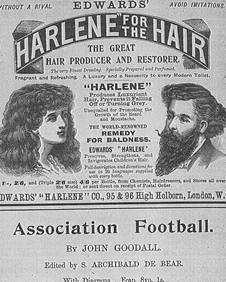 Figure 1. Edwards. Advertisement. Harlene for Hair. Blackwood’s Magazine, January 1899. Note its Empire-wide appeal: “Full description and directions for use in 20 languages”. British Library, Shelfmark 2107.700000 DSC. Reproduced by permission.↩
Figure 1. Edwards. Advertisement. Harlene for Hair. Blackwood’s Magazine, January 1899. Note its Empire-wide appeal: “Full description and directions for use in 20 languages”. British Library, Shelfmark 2107.700000 DSC. Reproduced by permission.↩
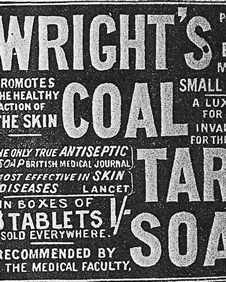 Figure 2. Wright’s. Advertisement. Coal Tar Soap: “Recommended by the medical faculty”, Temple Bar, August 1899. British Library. Reproduced by permission.↩
Figure 2. Wright’s. Advertisement. Coal Tar Soap: “Recommended by the medical faculty”, Temple Bar, August 1899. British Library. Reproduced by permission.↩
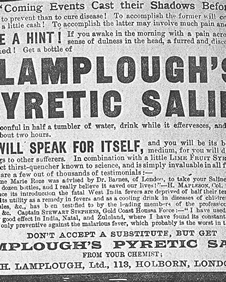 Figure 3. Lamplough. Advertisement. Pyretic Saline. Temple Bar, January 1899. Note, again, the Empire overtones: “Captain Stewart Stephens, Gold Coast Houssa Force:—“I have used your saline with undoubtedly good effect in India, Natal, and Zululand […] against the malarious fever, which is probably the worst in the world.” British Library. Reproduced by permission.↩
Figure 3. Lamplough. Advertisement. Pyretic Saline. Temple Bar, January 1899. Note, again, the Empire overtones: “Captain Stewart Stephens, Gold Coast Houssa Force:—“I have used your saline with undoubtedly good effect in India, Natal, and Zululand […] against the malarious fever, which is probably the worst in the world.” British Library. Reproduced by permission.↩
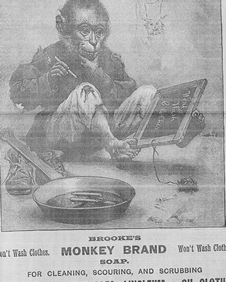 Figure 4. Brooke’s. Advertisement. Monkey Brand Soap. Cornhill, December 1899. Equating cleaning and good repair with aspirations to refinement and education. British Library. Reproduced by permission.↩
Figure 4. Brooke’s. Advertisement. Monkey Brand Soap. Cornhill, December 1899. Equating cleaning and good repair with aspirations to refinement and education. British Library. Reproduced by permission.↩
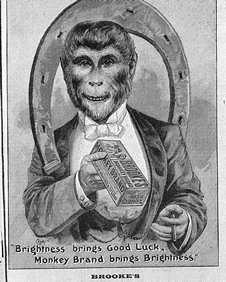 Figure 5. Brooke’s. Advertisement. Monkey Brand Soap. Cornhill, June 1899. This time, equating good repair with financial success in a specific cultural mode. British Library. Reproduced by permission.↩
Figure 5. Brooke’s. Advertisement. Monkey Brand Soap. Cornhill, June 1899. This time, equating good repair with financial success in a specific cultural mode. British Library. Reproduced by permission.↩
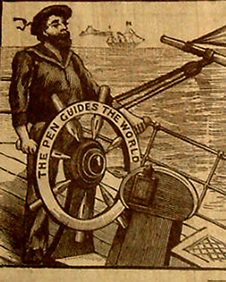 Figure 6. Hewitt’s. Advertisement. Ball-pointed pens. Edinburgh, Adam and Charles Black publication, 1890. Jennifer Carnell. Sensation Press. Reproduced by permission.↩
Figure 6. Hewitt’s. Advertisement. Ball-pointed pens. Edinburgh, Adam and Charles Black publication, 1890. Jennifer Carnell. Sensation Press. Reproduced by permission.↩
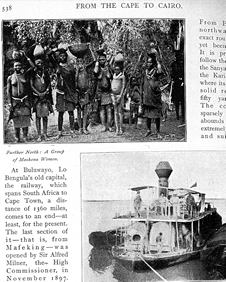 Figure 7. Page from de Thierry, “From The Cape To Cairo” (538). British Library. Reprinted by permission.↩
Figure 7. Page from de Thierry, “From The Cape To Cairo” (538). British Library. Reprinted by permission.↩
Endnotes
